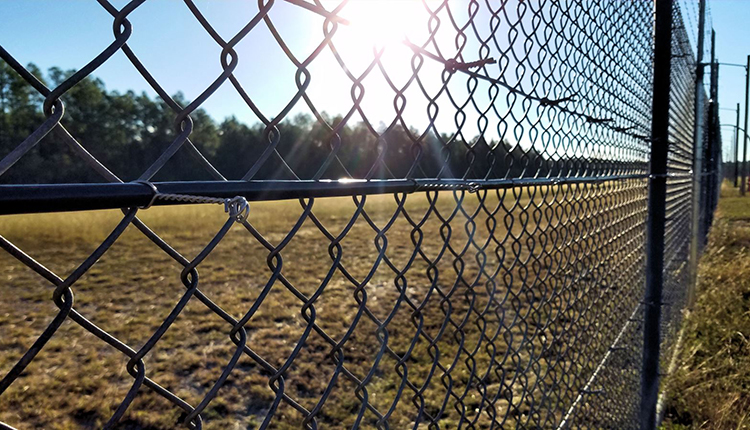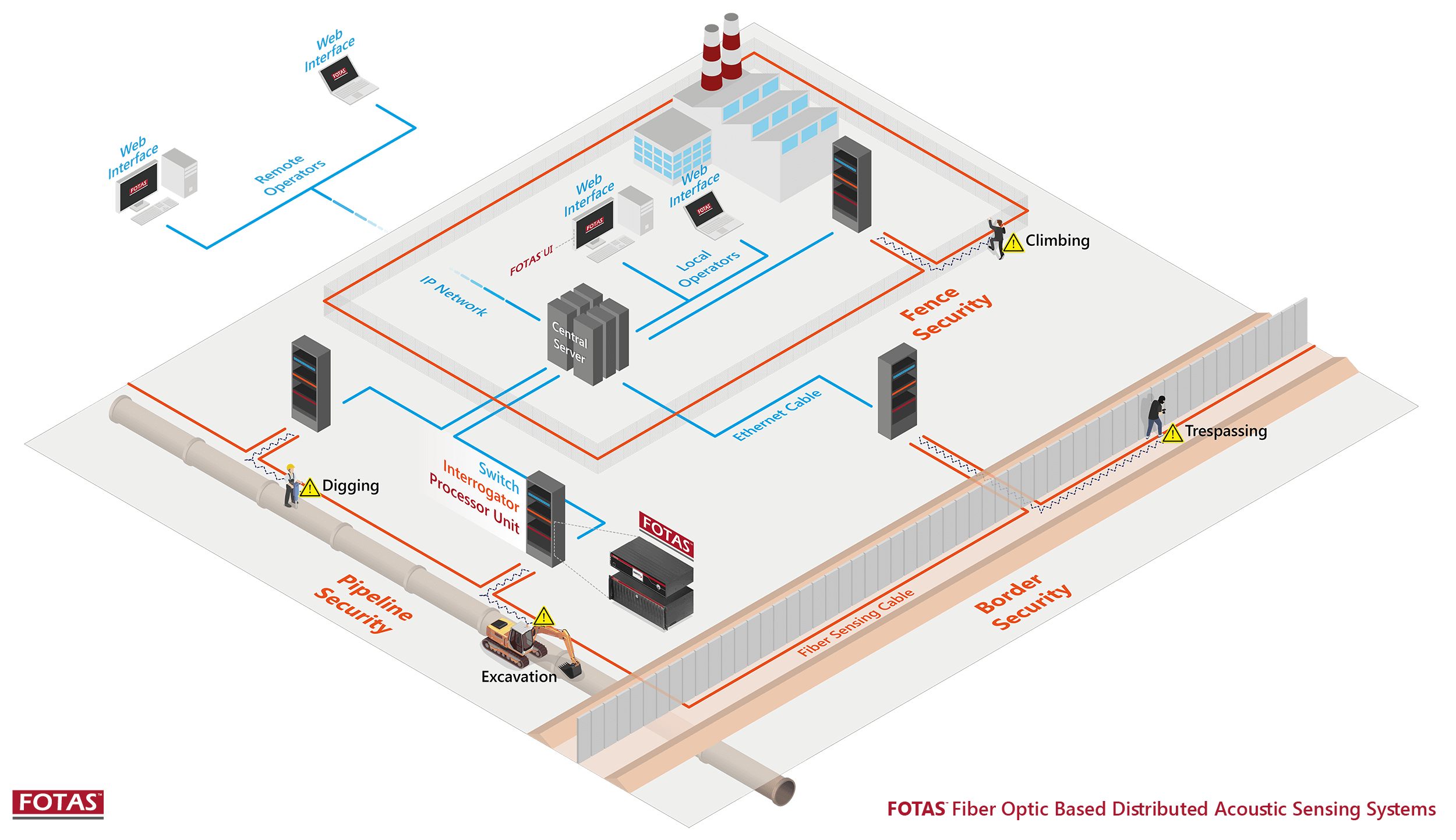Why Fiber Optic Security Equipments Are the Future of Defense
The change to fiber optic security systems notes a significant development in the realm of protection, driven by their exceptional data transmission abilities and resilience to outside interferences. These systems not only promote faster and much more trusted communication yet additionally offer an economical solution with reduced maintenance demands. As the landscape of safety progresses alongside emerging technologies such as AI and IoT, the possibility for optical fiber to improve and redefine security infrastructures becomes progressively noticeable. However, the implications of these developments elevate crucial inquiries regarding the future of protection steps and their effectiveness in an ever-changing environment.
Benefits of Fiber Optic Equipments
Among the main advantages of fiber optic systems is their remarkable bandwidth capacity, which promotes the transmission of huge volumes of information over long ranges without considerable loss. This characteristic is specifically helpful for safety applications that need the continuous tracking and transfer of high-definition video clip feeds, sensor data, and various other crucial details. Optical fiber can fit the growing needs of modern protection systems, making certain that information continues to be undamaged and dependable.
In addition, fiber optic cable televisions are less at risk to electromagnetic disturbance, which can be a significant issue in environments with numerous electronic devices. This resistance improves the stability of the information being sent, thus decreasing the risk of information breaches or system failings. Additionally, fiber optic systems are naturally a lot more protected than traditional copper cords, as using a fiber optic line without discovery is extremely difficult.
The longevity of fiber optic cable televisions likewise adds to their appeal. They are immune to ecological variables such as wetness and temperature changes, lowering maintenance costs and increasing system durability. In general, these advantages setting fiber optic systems as a durable and efficient selection for modern safety facilities, making sure reliable and safe data transmission.
Improved Data Transmission Rate

The capacity to send vast amounts of information quickly assists in the smooth assimilation of high-def video clip feeds and advanced analytics. Safety and security systems can currently refine and examine info in real-time, improving reaction times and situational understanding. Furthermore, fiber optic links sustain longer transmission ranges without destruction of signal top quality, making them ideal for expansive security networks.
The increased rate of fiber optic systems not just improves the efficiency of safety and security procedures however likewise minimizes latency. This is especially important in vital useful reference circumstances where timely decision-making can stop safety violations or alleviate potential threats. As companies proceed to prioritize safety and effectiveness, the need for quick and reputable information transmission will unquestionably solidify fiber optic systems as a keystone of contemporary protection framework.
Resistance to Interference
Fiber optic safety systems consistently show phenomenal resistance to electro-magnetic interference, a crucial advantage in settings vulnerable to electronic sound. Unlike typical copper wires, which can be adversely affected by electromagnetic fields, superhigh frequency interference, and other kinds of electrical disruption, fiber optic cables make use of light to transfer information. This intrinsic building makes sure that the signals remain clear and unchanged, no matter surrounding link digital task.
Using glass or plastic fibers in fiber optic innovation creates an obstacle against interference, enabling for reliable information transmission even in tough circumstances such as commercial facilities, urban areas with high electronic web traffic, or places near radio towers. This characteristic substantially lowers the possibility of signal deterioration or loss, making fiber optic systems especially appropriate for safety and security applications where stability and precision of data are critical.
Additionally, this resistance to interference improves the total efficiency and integrity of protection systems, making certain that monitoring and alert systems work seamlessly. In a world where safety is increasingly threatened by innovative innovations, the durability of fiber optic systems attracts attention as a critical function, reinforcing their standing as an important component of modern protection infrastructure.
Cost-Effectiveness Over Time
Significant price savings can be achieved with time with the execution of fiber optic safety systems. While the initial financial investment might seem greater compared to standard copper-based systems, the long-term economic benefits end up being apparent through decreased functional and maintenance expenses (fiber security). Fiber optic cables are inherently a lot more resilient and less at risk to environmental variables, which equates to reduce replacement and fixing expenditures over their life expectancy
Moreover, fiber optic systems need much less power to published here operate, which additionally reduces power costs. Enhanced data transmission capacities permit fewer repeaters and amplifiers, lessening devices investment and simplifying setup processes. The scalability of these systems likewise adds to cost-effectiveness, as companies can increase their safety and security facilities without incurring considerable additional expenses.
Another element to take into consideration is the boosted efficiency in monitoring and feedback capabilities that optical fiber provide. Improved real-time information transmission can bring about quicker occurrence reaction times, potentially mitigating losses and responsibilities connected with safety breaches. In amount, the lasting benefits of fiber optic security systems not only validate the preliminary expenditure but also place them as a financially prudent option for organizations looking for durable defense solutions.

Future Innovations in Protection
Progressing modern technologies are established to reinvent safety systems, incorporating expert system (AI) and device discovering to enhance threat detection and response capacities. These technologies will certainly enable safety and security systems to analyze substantial quantities of data in real-time, identifying patterns and anomalies that indicate potential dangers. This positive method will make it possible for quicker decision-making and much more reliable event responses.
Additionally, the consolidation of the Internet of Points (IoT) is leading the way for interconnected safety and security gadgets, using extensive surveillance and monitoring. Smart sensing units can relay details concerning environmental modifications, while automated signals can notify protection employees quickly of questionable tasks.
In addition, the evolution of biometric modern technologies will further boost safety systems. Face recognition, finger print scanning, and retina recognition are coming to be more sophisticated, supplying layers of verification that are tough to bypass.
Final Thought
To conclude, fiber optic safety and security systems represent a considerable innovation in defense innovation, supplying exceptional data transmission speed, resistance to electro-magnetic interference, and lasting cost-effectiveness. As the need for sophisticated safety remedies remains to expand, the integration of fiber optics with emerging innovations such as AI, IoT, and biometrics will further enhance security frameworks (fiber security). The combination of these innovations will certainly make certain a more safe and secure and receptive setting, solidifying fiber optics as a cornerstone of future protection systems